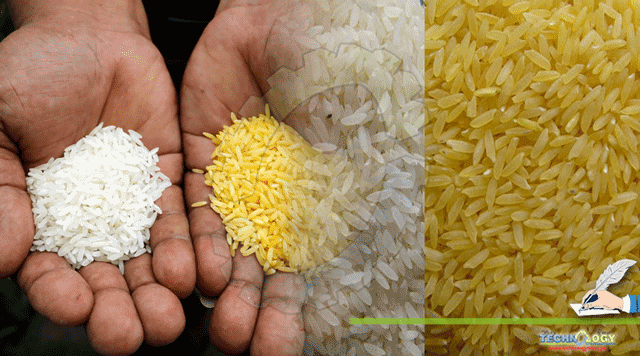There are many ways to produce genetically modified plants. The two most commonly used are the bacterium ‘Agrobacterium tumefaciens’, which is naturally capable of transmitting DNA to plants, and the ‘gene gun’, which shoots tiny particles attached to the DNA in a plant cell. Typically, individual plant cells are targeted and these are regenerated into complete Genetically Modified crops using tissue culture.

By Jameela Muhammad and Laiba Jahangir
In the developed world the content of nutritious food is not too much, as individuals have a variety of foods that will meet all their nutritional needs. In developing countries, this is not always the case, and people often rely on a single plant to consume their energy. Genetically Modified technology provides a way to reduce some of these problems with engineered plants to produce more products that can fight malnutrition.
TYPES OF MODIFICATION USED:
• Transgenic
Transgenic plants have genes that are implanted in them that are derived from another species. The inserted genes may come from similar species, or between states. Transgenic plants are used to produce proteins, such as toxins from B. thuringiensis, household-resistant genes, antibodies, and vaccine antigens.
• Cisgenic
Cisgenic plants are made using genes that are found within the same or closely related genes, where
common plants are bred.
• Subgenic
Genetically modified plants can be developed using gene knockdown to modify plant genetic makeup without incorporating genes from other plants. In 2014, Chinese researcher Gao Caixia applied for patents in the production of powdery mildew. The type has no genes that include protective proteins that protect the skin. Investigators removed all three copies of the gene from the wheat hexaploid genome. Gao has used TALENs and CRISPR genetic planning tools without adding or modifying any other genes. No field trials were immediately planned. The CRISPR process was also used by Penn State researcher Yinong Yang to convert white button mushrooms to brown.
THE GOLDEN RICE PROJECT:
An important example of the power of this technology is the ‘Golden Rice Project’. Vitamin A deficiency is widespread in developing countries and is estimated to be caused by the death of an estimated 2 million children a year. 18 Among the surviving children it has been identified as the leading cause of blindness. carotene, which is This process involves introducing enzymes needed to enable rice grains to process pre-meal molecules and thus activate the biochemical mechanism of β-carotene production.
This method works on rice leaves but is closed to grain during the growing season. Therefore, nothing new is produced. Modification only involves the production of β-carotene in the skin where the plant normally does not produce, i.e. grain. The reason the plant closes this way is because the plant does
not need it there; pigs such as β-carotene are usually only required for photosynthetic tissue.Golden Rice is designed for farmers in the world’s poorest countries, and from the beginning, scientists’ goal has been to provide free technology.
GM crops grown today, or under development, are transformed by various factors. These qualities include improved shelf life, disease resistance, stress resistance, pesticide resistance, insect resistance, production of useful substances such as biofuel or drugs, and the ability to absorb toxins and use in waste bioremediation.
AUTHORS: Jameela Muhammad and Laiba Jahangir Students of Kinnaird College for Women University, Lahore BS Genetics ( Semester 3 )